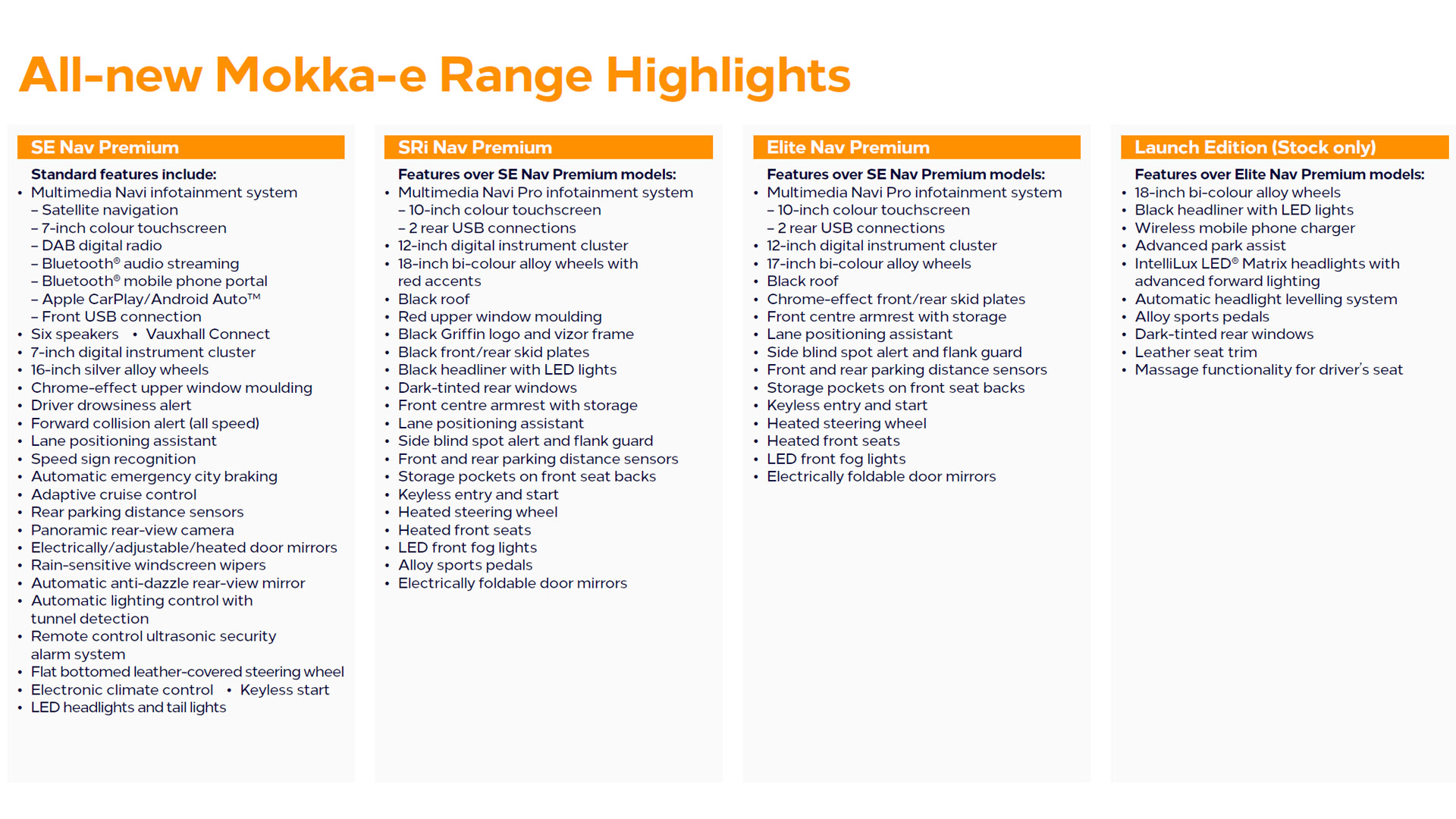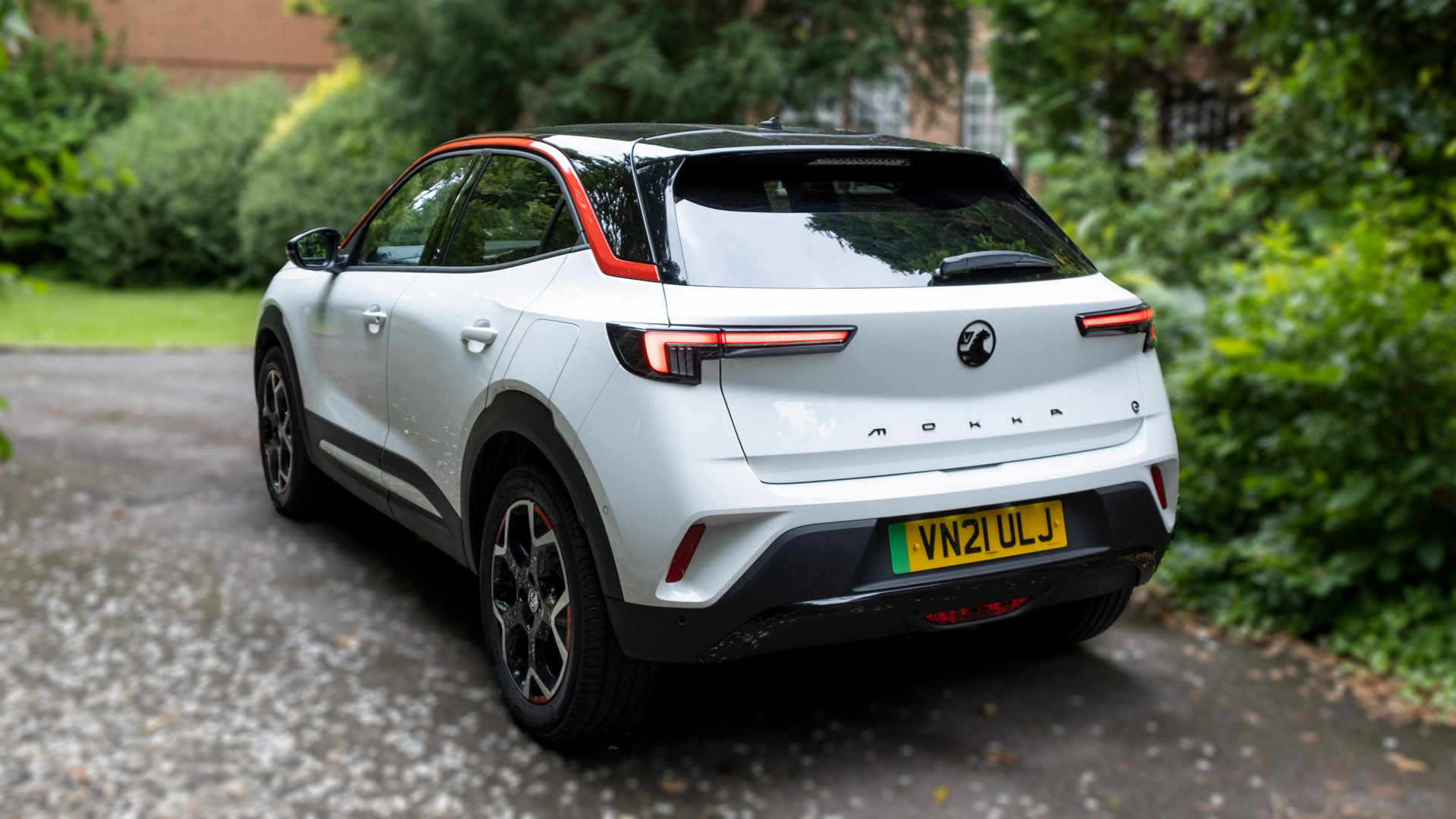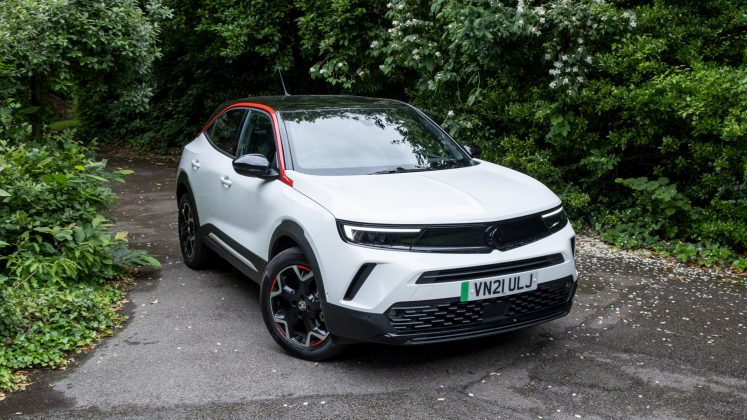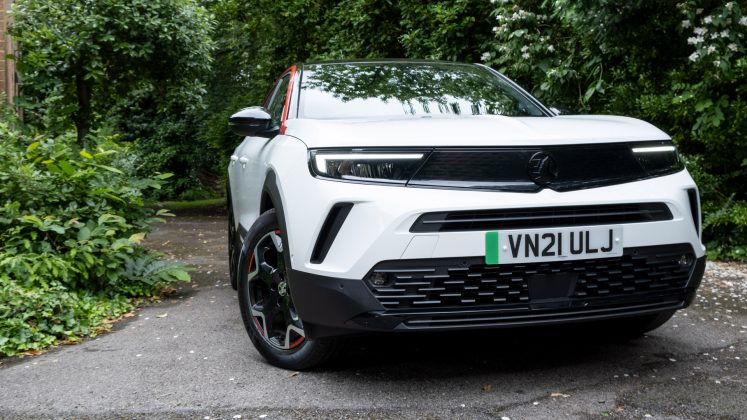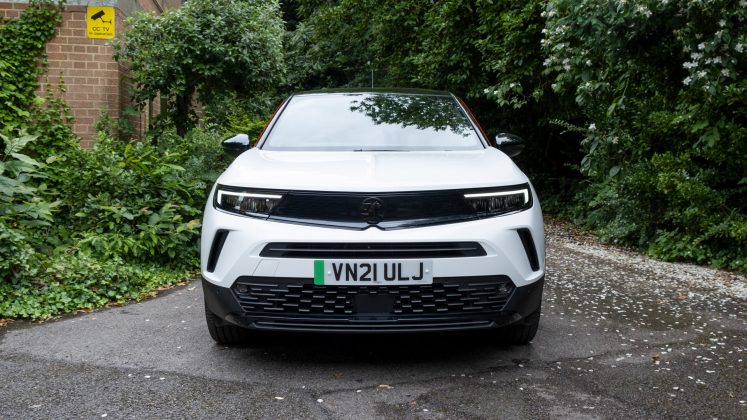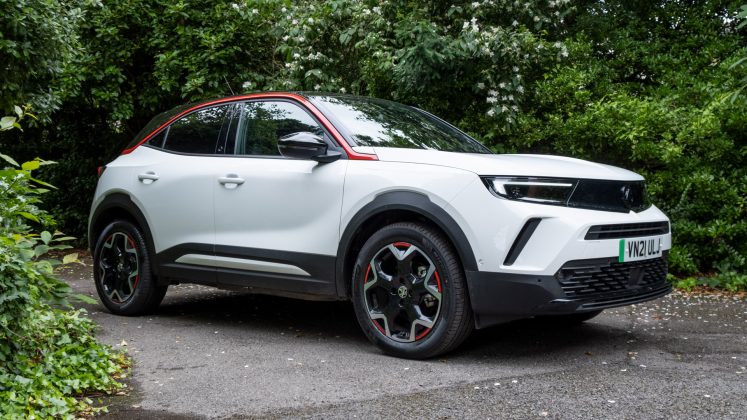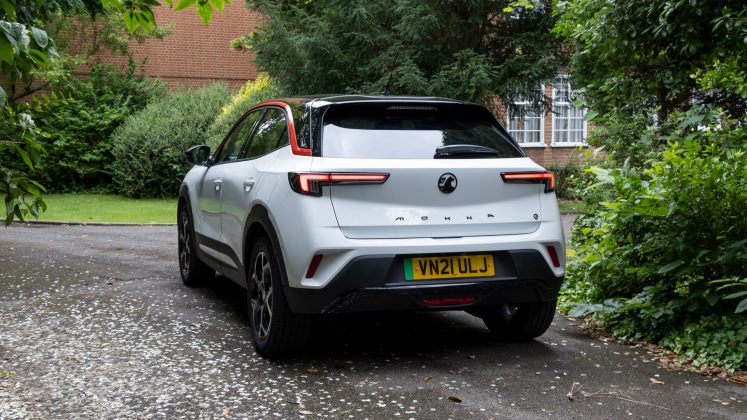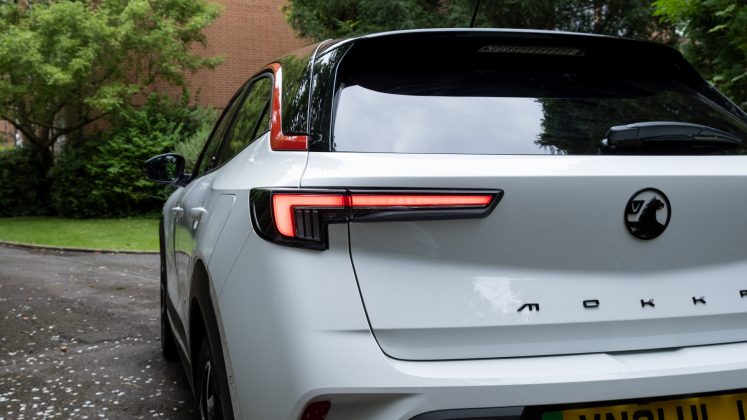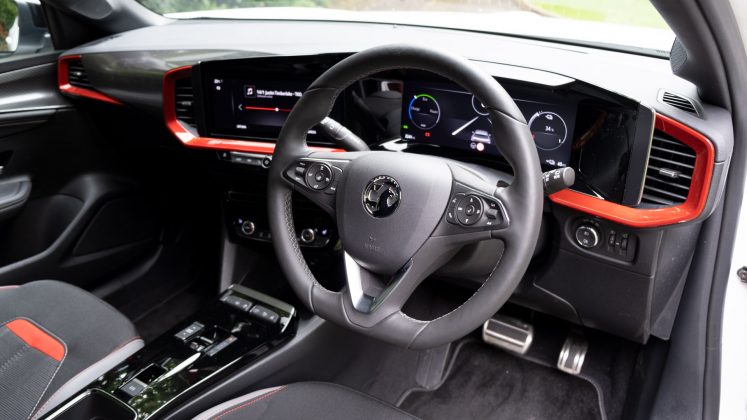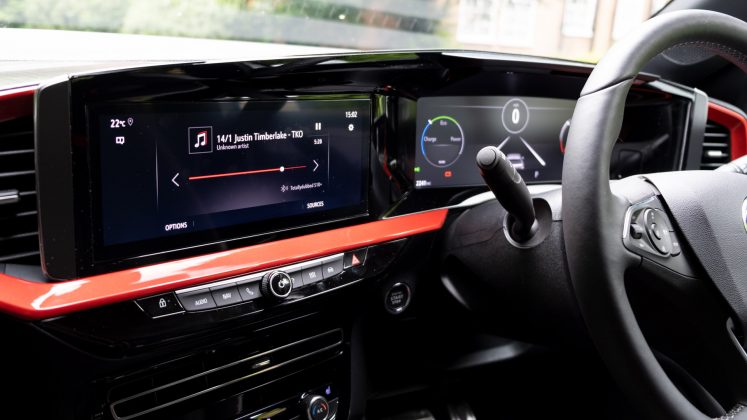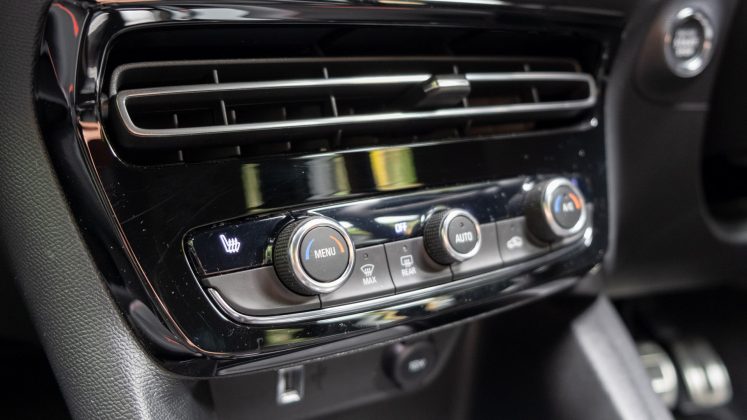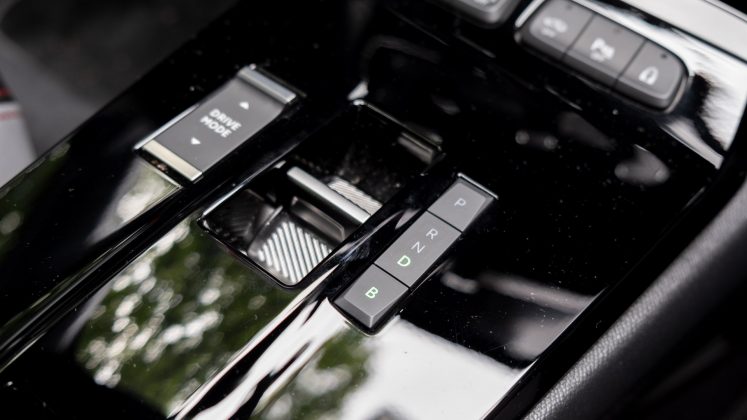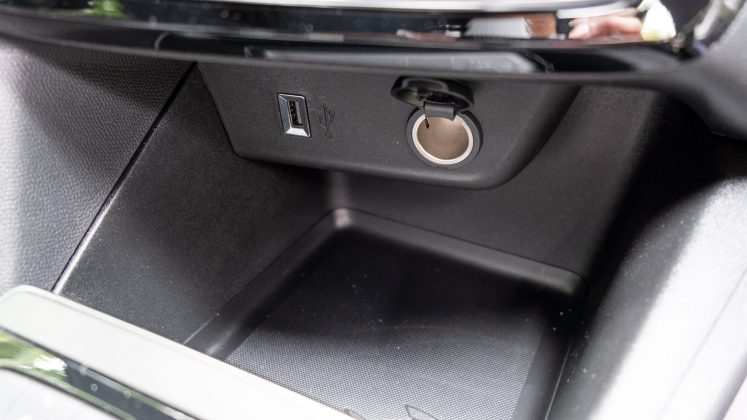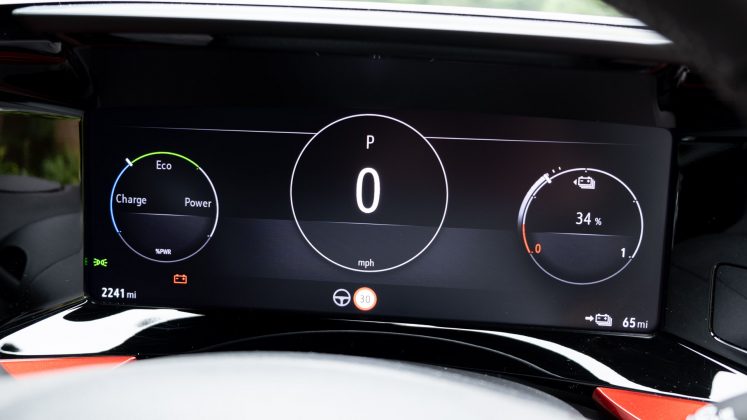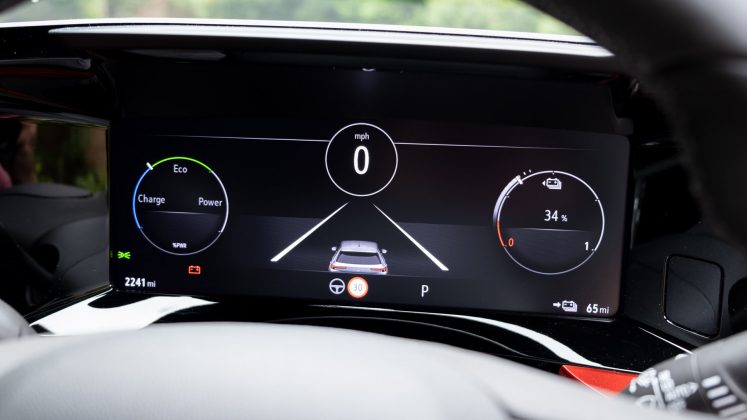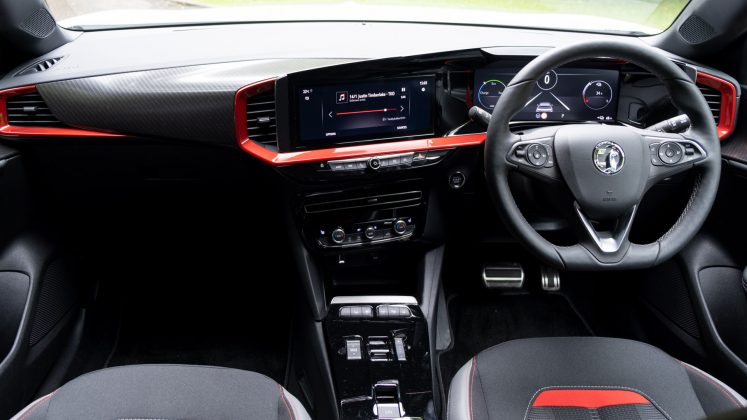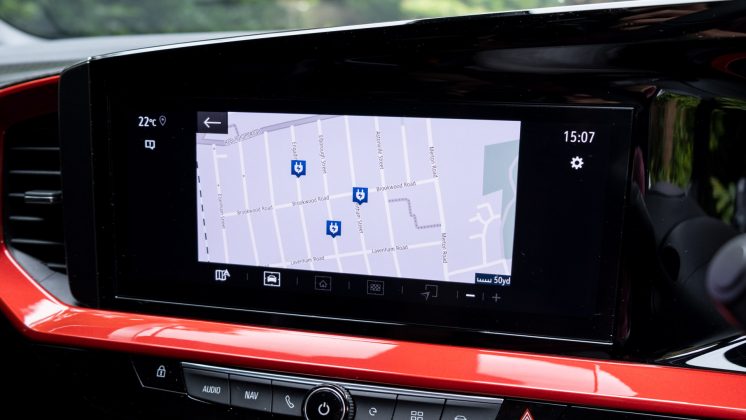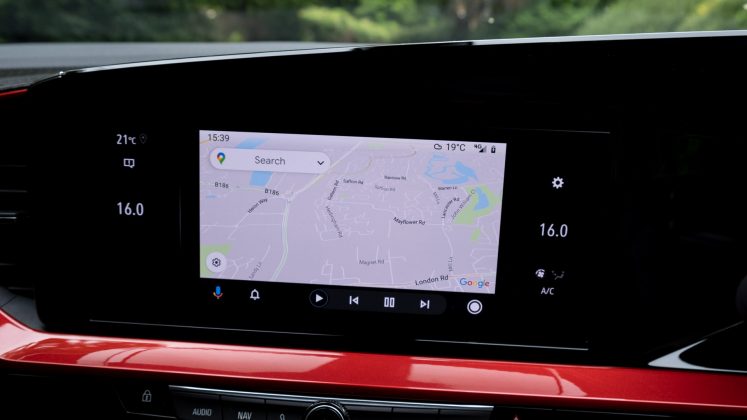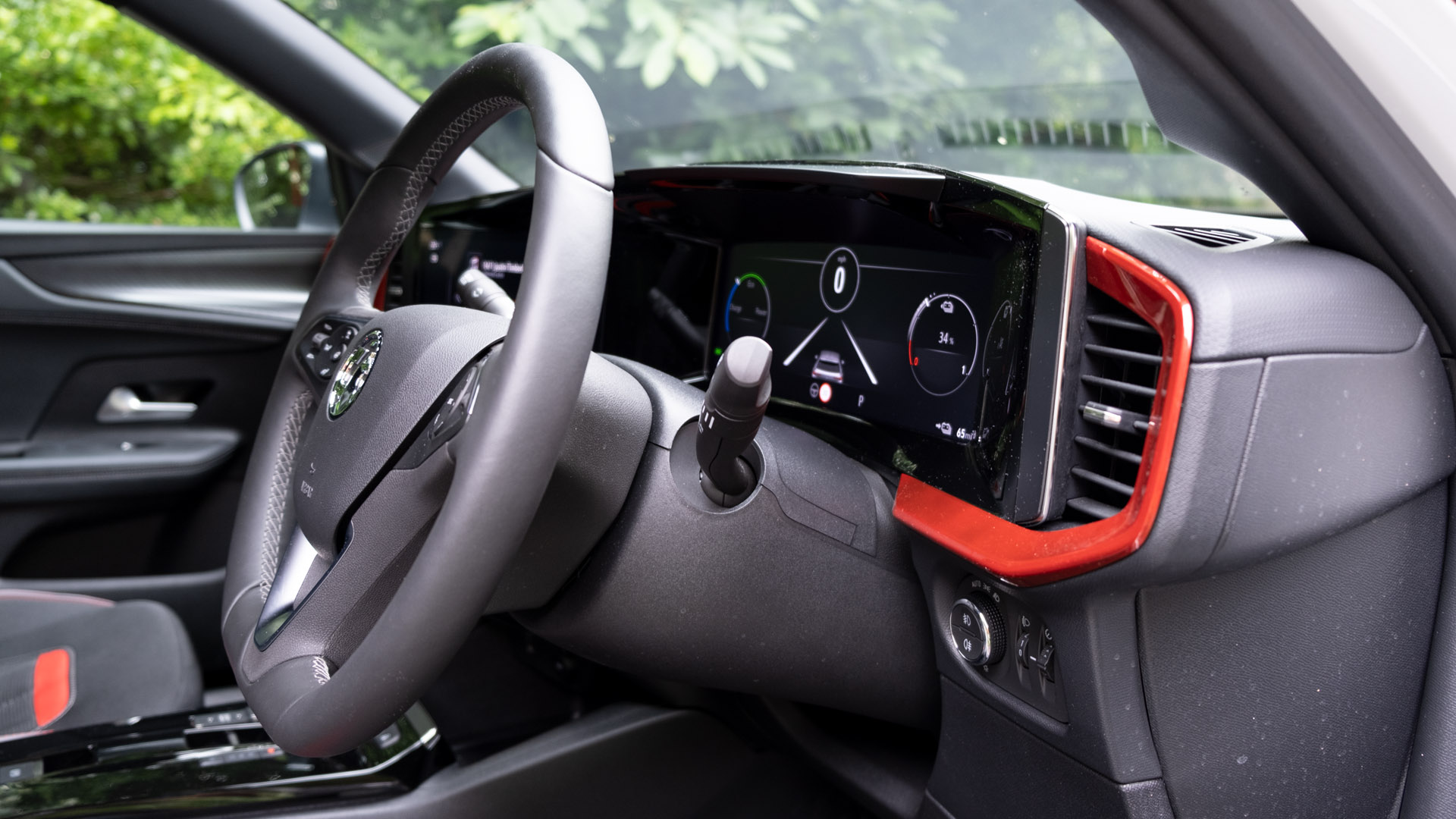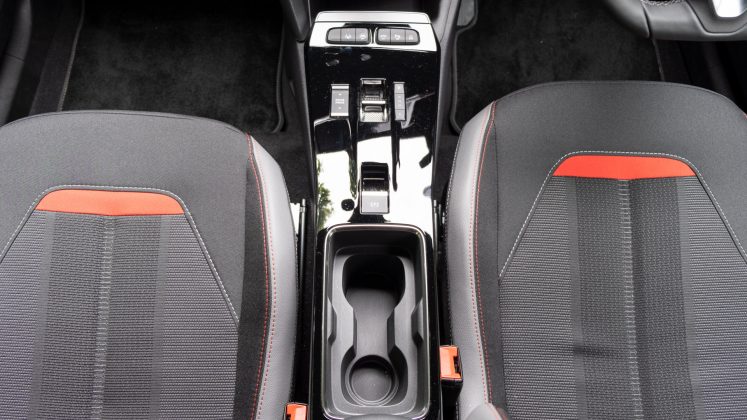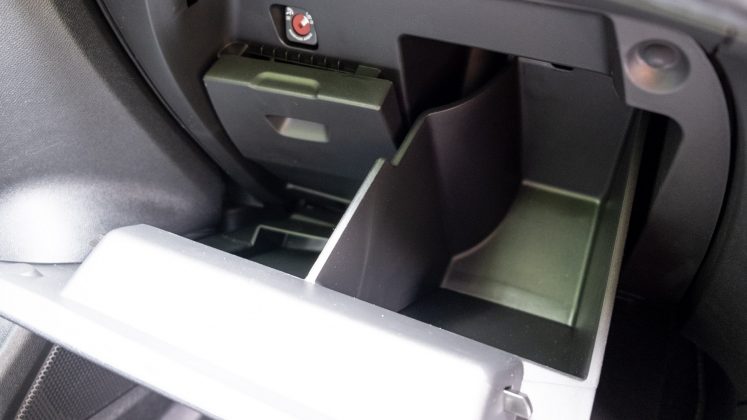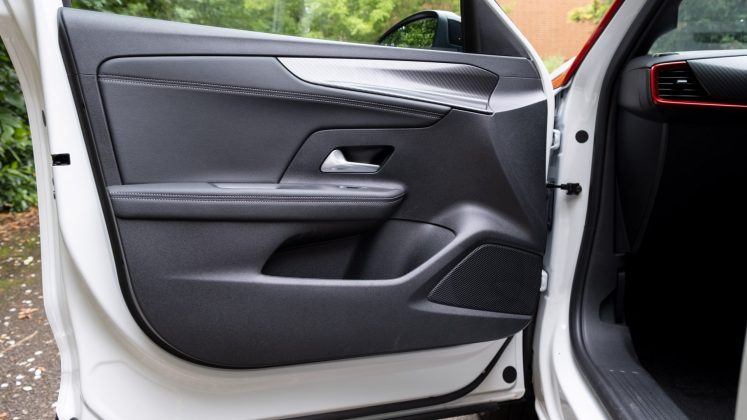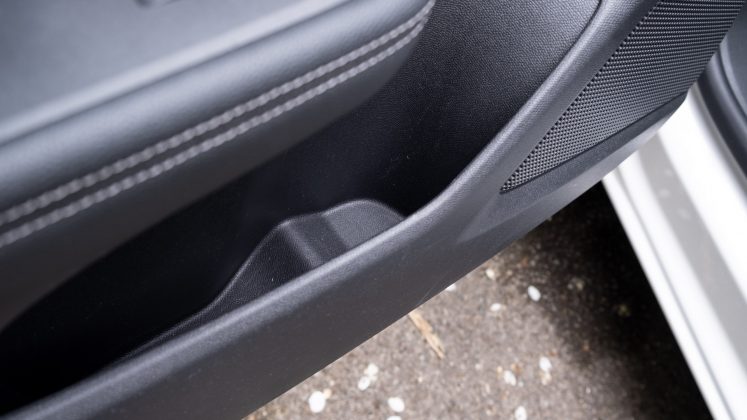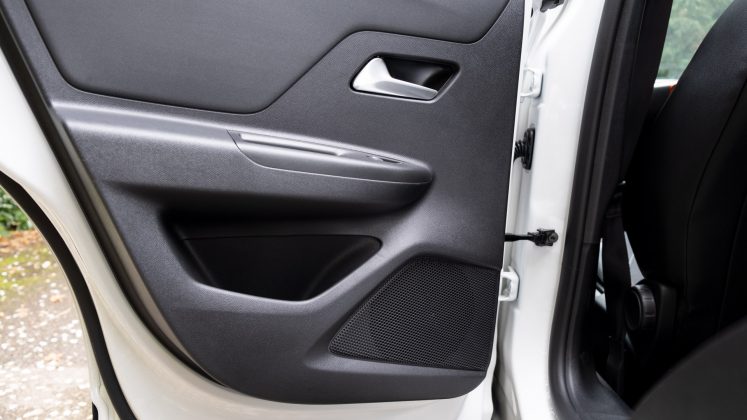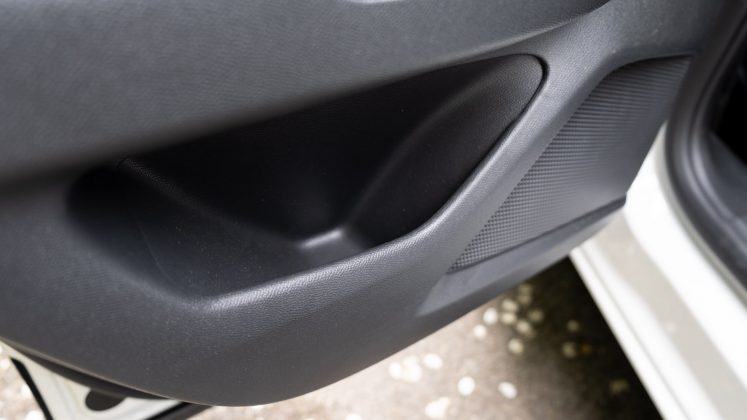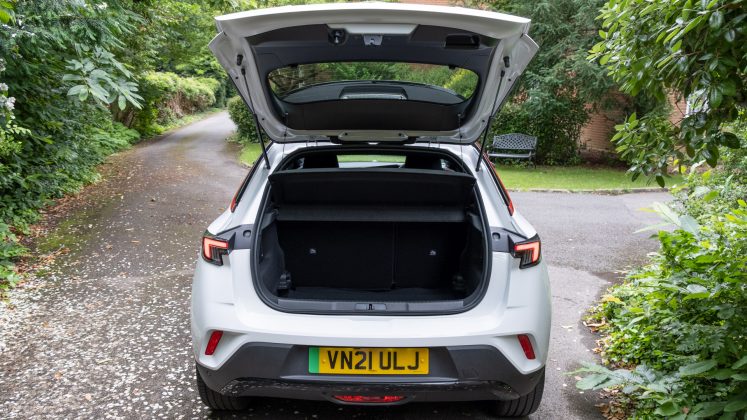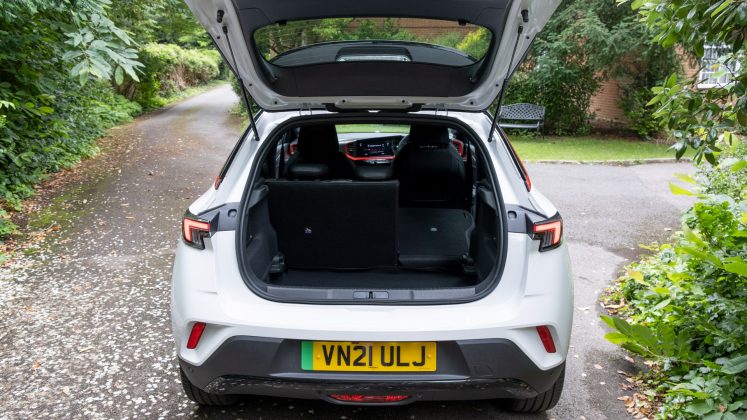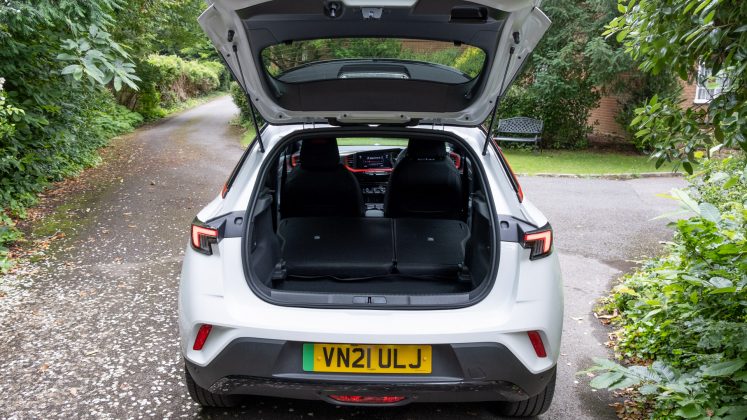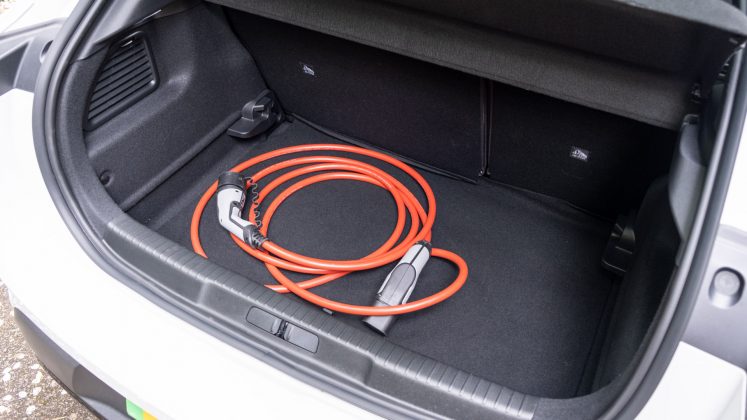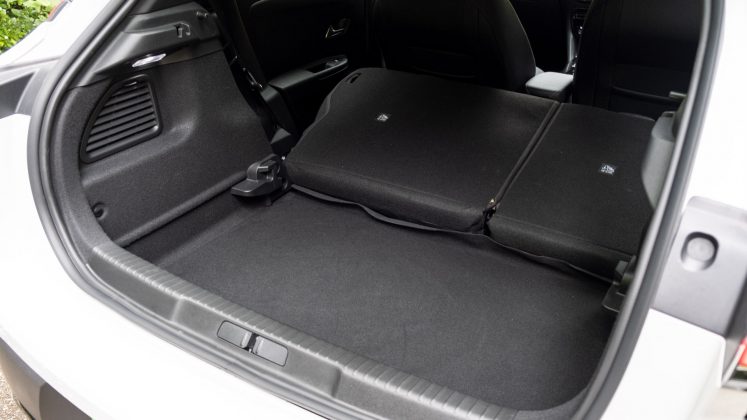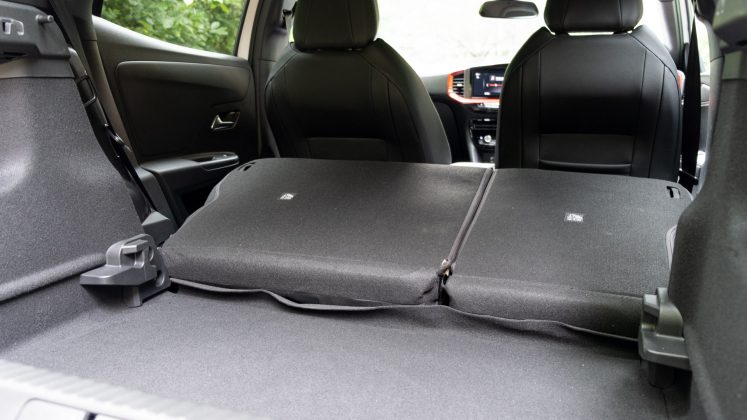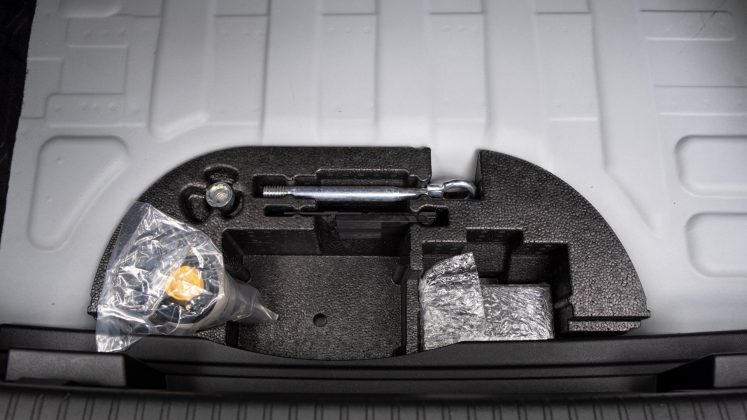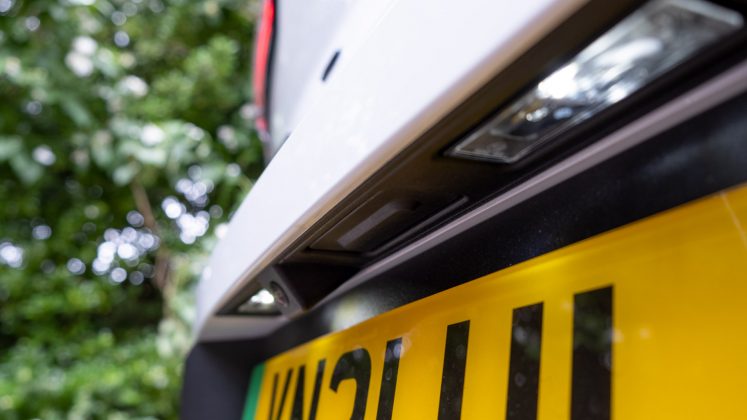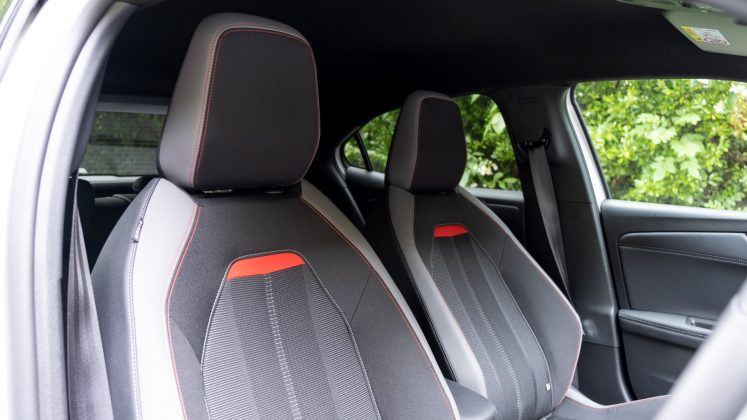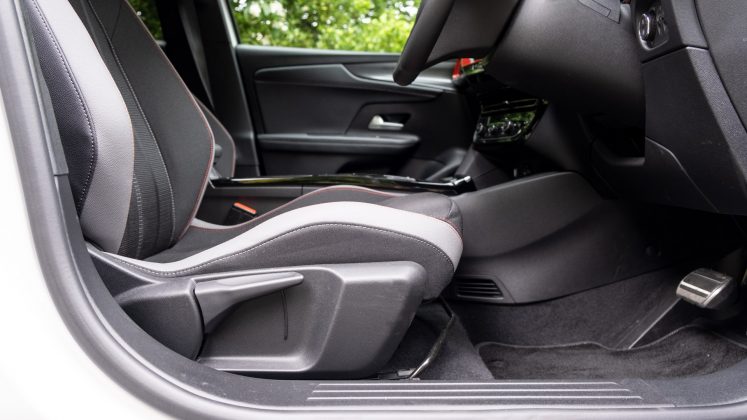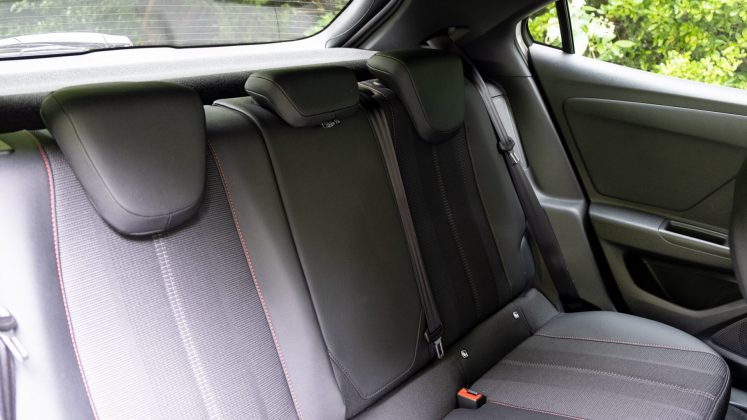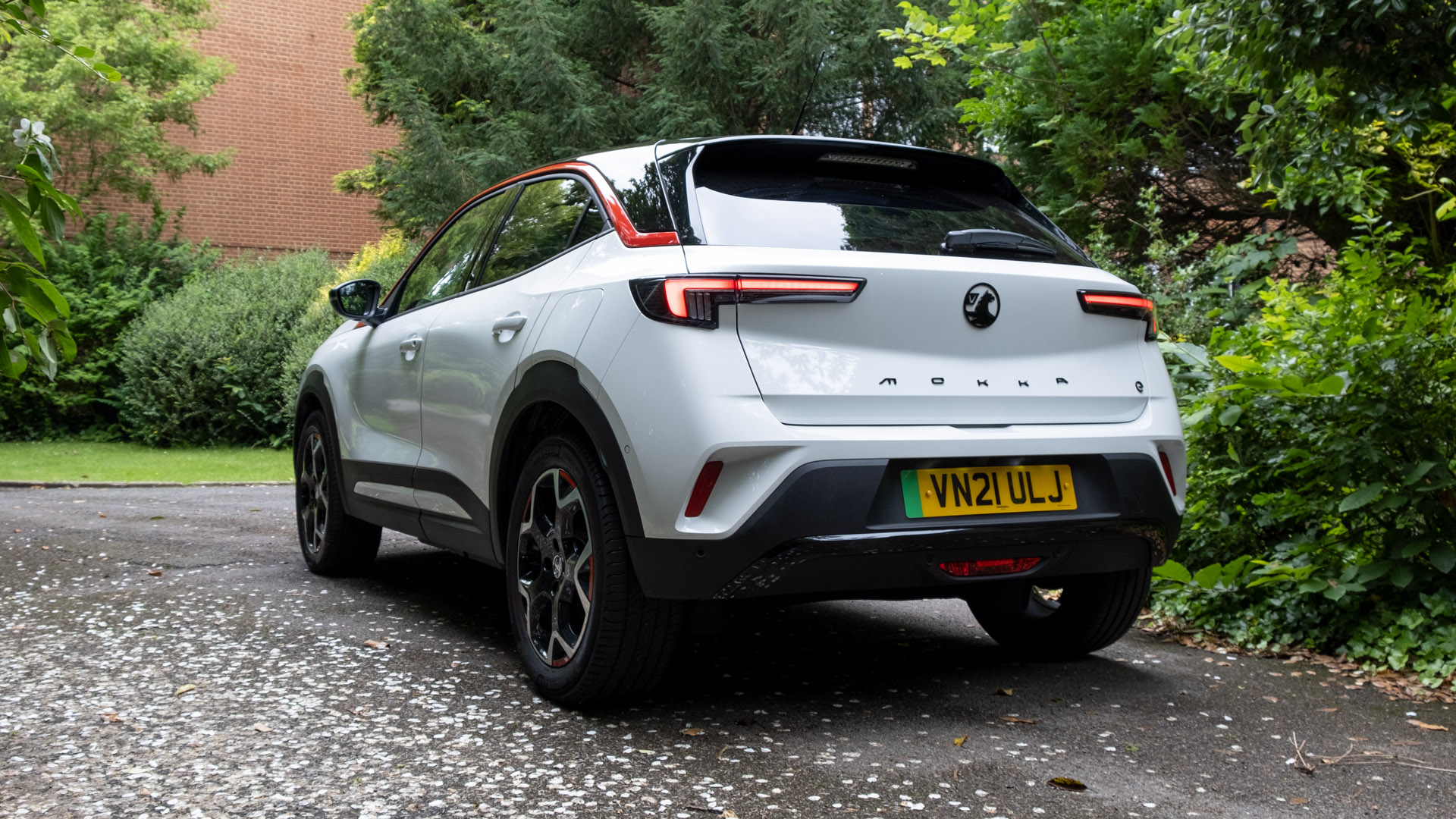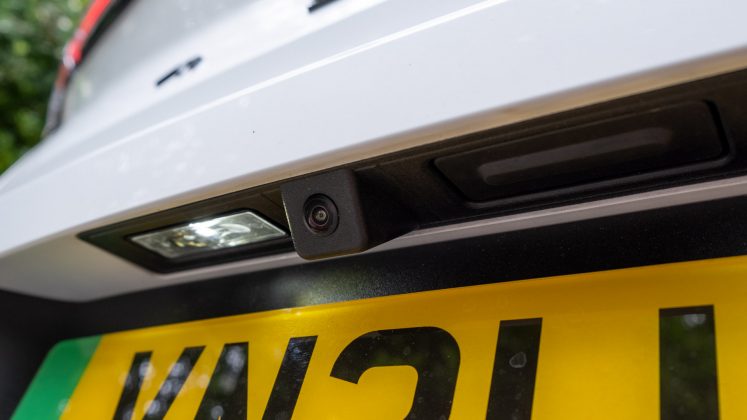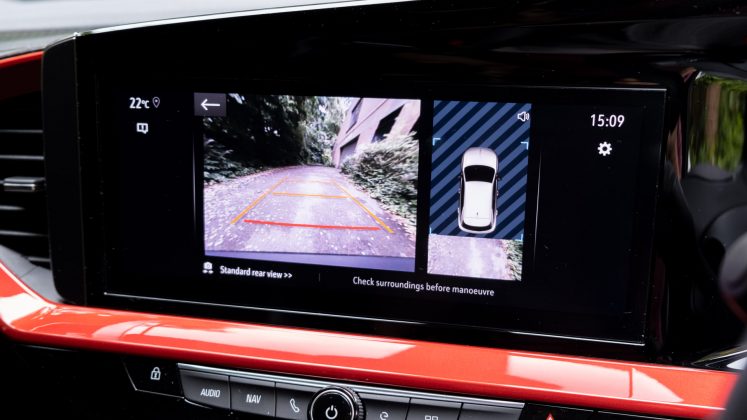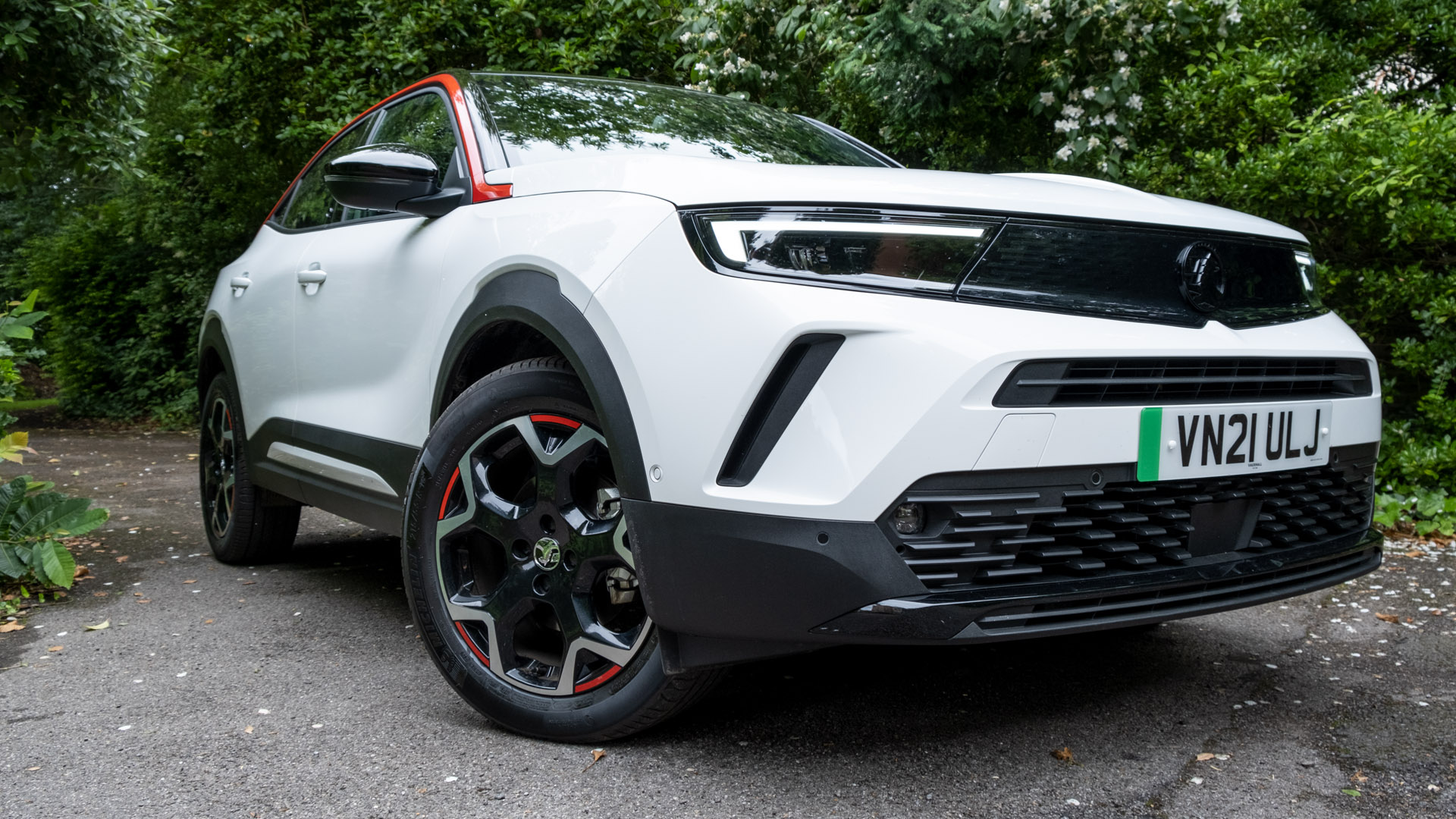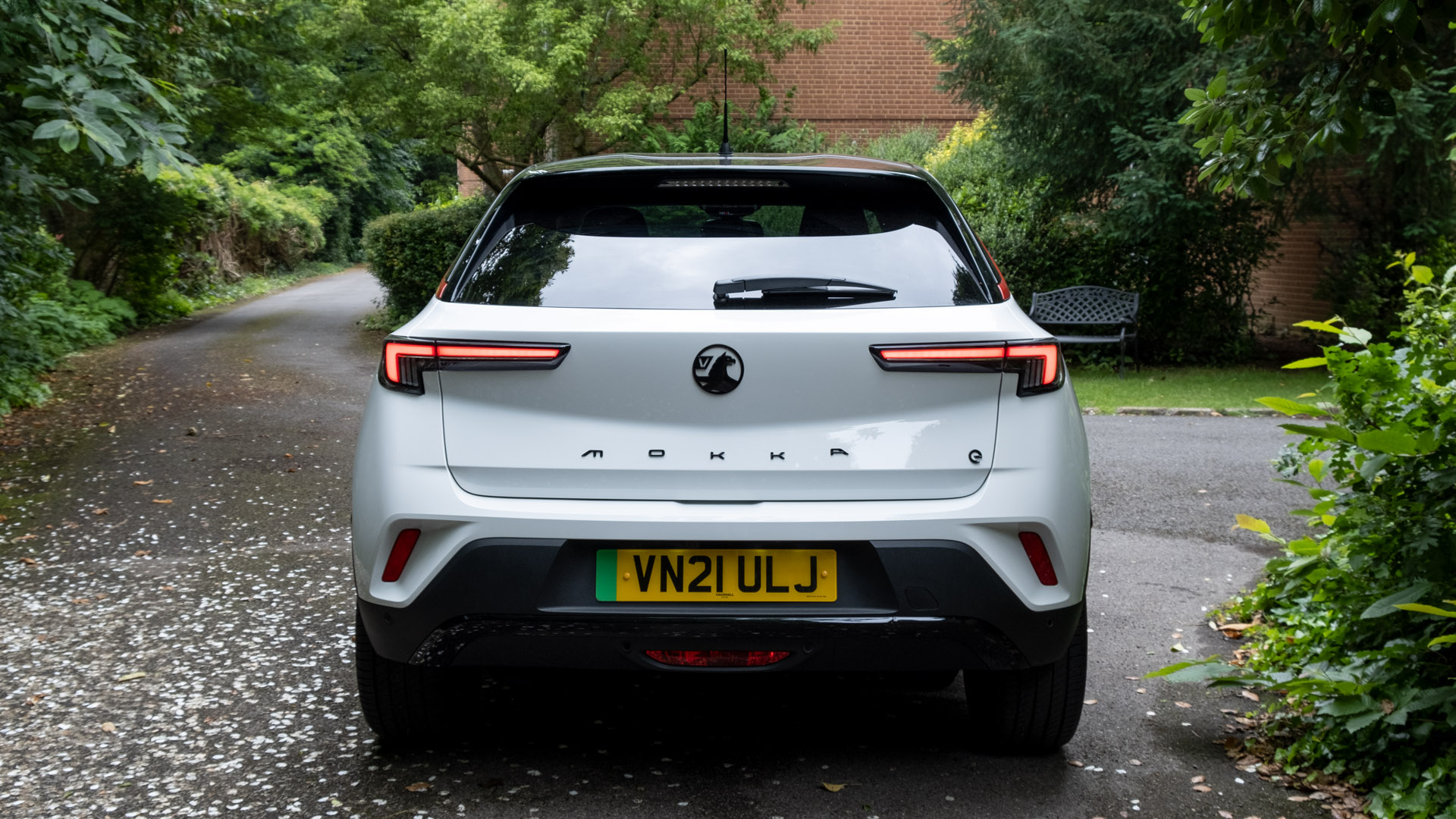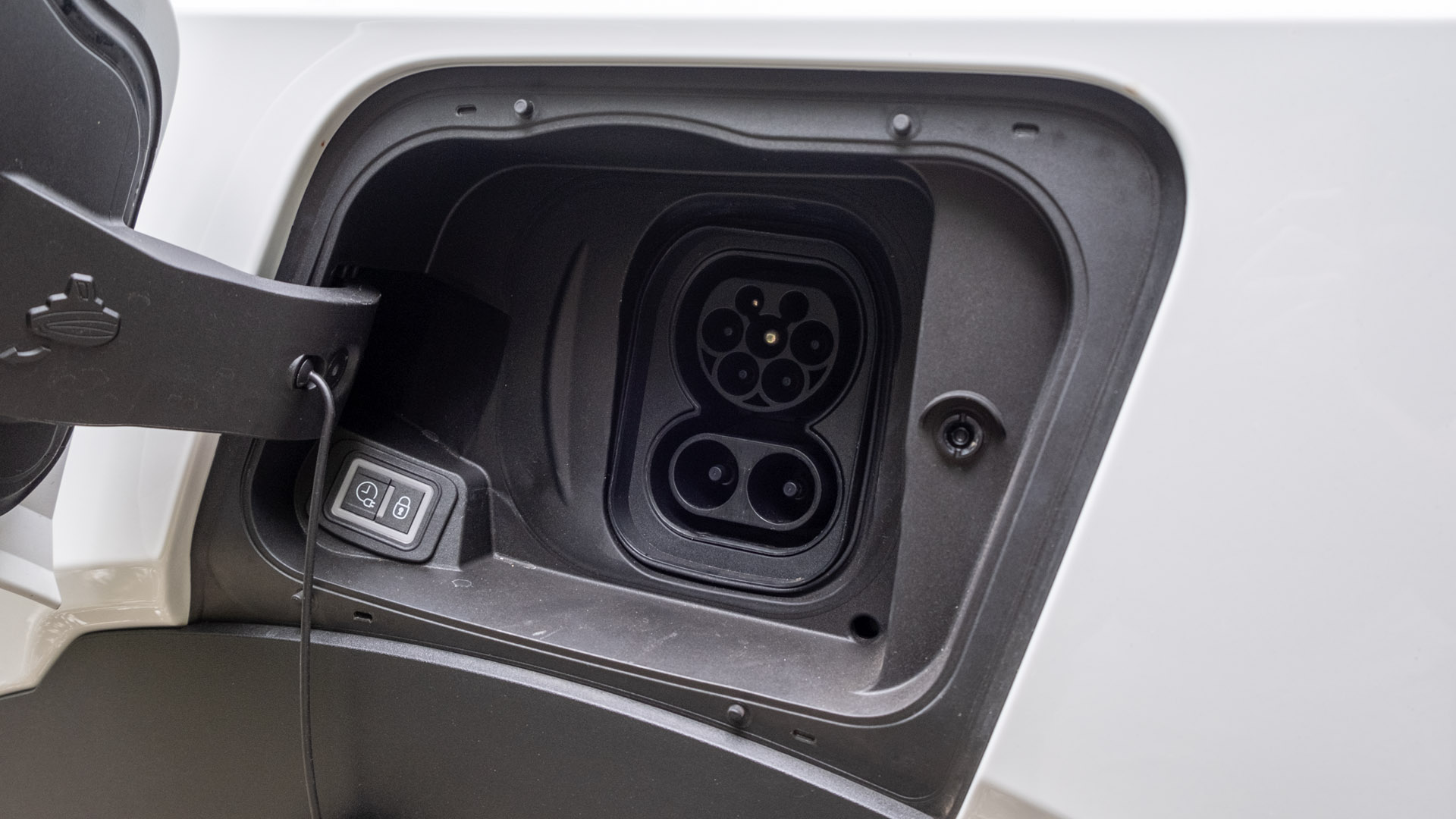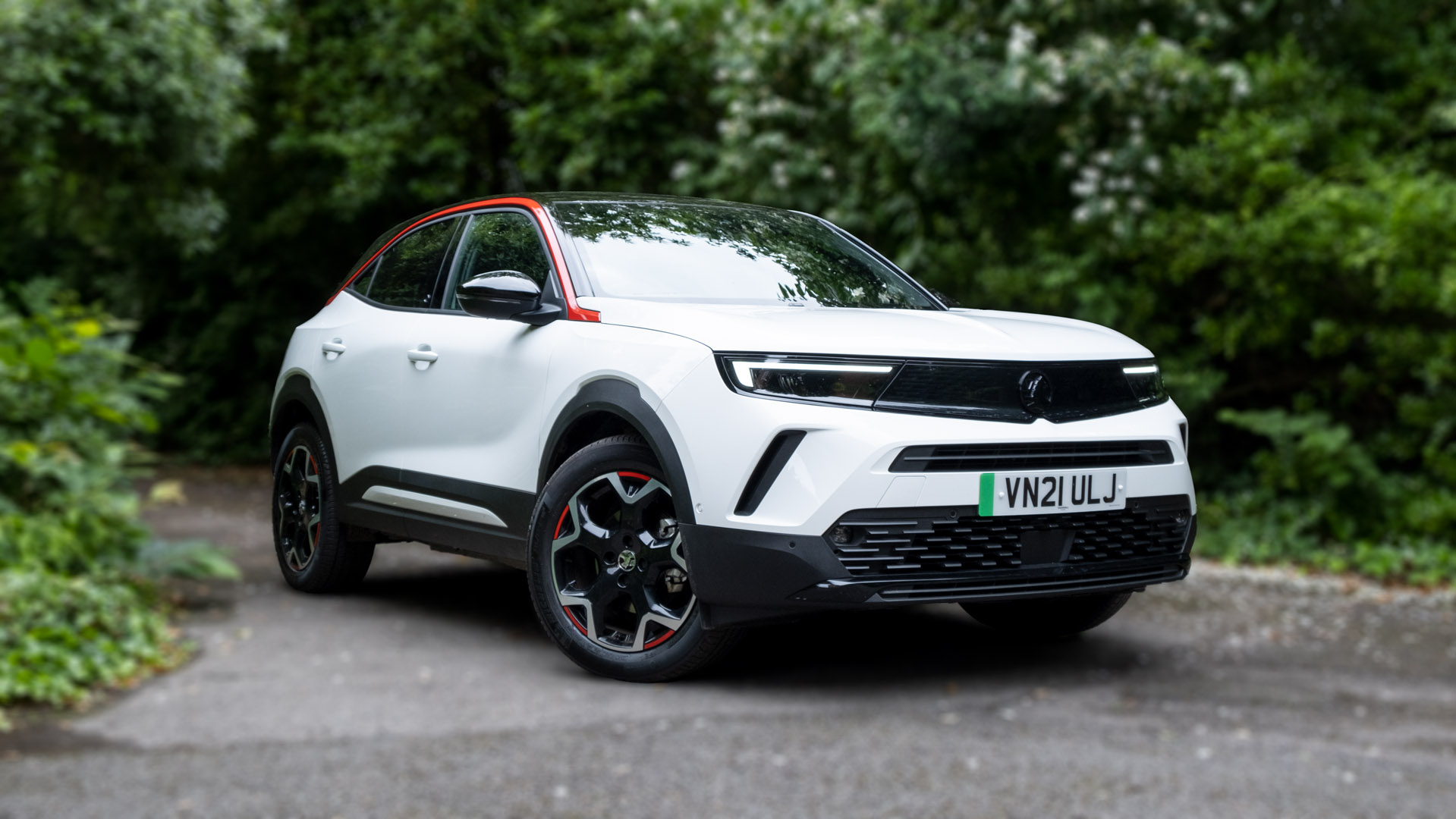The Mokka-e is the manufacturer’s response to other all-electric SUVs that have flooded the consumer market. Indeed, Vauxhall/Opel’s second EV is a subcompact crossover, which has undergone an overhaul in design since the first-generation model was revealed in 2012.
Vauxhall-Opel still offers the new Mokka with a petrol and diesel powertrain, but in this review, we’ll solely be concentrating on the pure electric model – the Mokka-e.
If you’d prefer to watch a review of the Vauxhall Mokka-e, head on over to our YouTube channel.
Vauxhall Mokka-e price & competition
The electrified Mokka starts from £30,540 after the government plug-in car grant (PiCG), that’s £10,100 more than the regular petrol model which starts from £20,440. Granted, there are differences between the two powertrains, however, basing it on price alone might deter Vauxhall customers from the more efficient, fully electric Mokka-e.
Find the best Vauxhall Mokka-e deals
The Mokka-e is available in four trim levels: SE Nav Premium, SRi Nav Premium (on review), Elite Nav Premium and the limited-production Launch Edition. A breakdown of what these models offer can be seen below (click to expand):
Buy a car phone mount on Amazon (Affiliate)
No matter which trim level you opt for, all models feature the same front-mounted electric motor, which dispatches 100 kW (134 hp) of power, 260 Nm of torque and combined with its 50 kWh battery pack claims to run for 201 miles on a single charge. All vehicles have an 8 years/100,000 miles/70% capacity battery warranty, too.
When it comes to its competitors, there are a few all-electric SUVs to consider: the MG ZS EV starts from £26,095; the Mazda MX-30 SE-L Lux that costs £26,715 (124 miles WLTP); the Citroen e-C4 (217 miles WLTP) starts from £30,895; the Peugeot e-2008 costs £30,730 (206 miles WLTP); the Kia Soul EV, e-Niro ‘2 64’ and the Hyundai Kona Electric Premium 64 kWh all come in at £32,445; the Volkswagen ID.4 starts from £40,800 (323 miles WLTP) and the entry-level VW ID.3 Pure Performance hatchback starts from £27,120 (216 miles WLTP), while the 264 miles WLTP variant costs £28,420. Elsewhere, you’ve got the MG5 EV, an all-electric estate with a claimed range of 214 miles at £25,095.
If you’re looking for something a bit more stylish and power, then there are a few premium all-electric SUVs to consider: the Volvo XC40 Recharge Twin at £49,950; the Audi e-tron at £62,025; the Jaguar I-Pace at £65,245; the Mercedes EQC at £65,720; and the Tesla Model X at £98,980.
Read next: Volkswagen ID.3 review: The best electric hatchback?
Vauxhall Mokka-e exterior review
From the exterior, the Mokka-e is far removed from its predecessor and has an eye-catching design. At the front, the automaker has integrated stylish L-shaped headlights that give the vehicle a unique personality, where it’s reminiscent of a cute-yet-angry robot – think Eve from Pixar’s Wall-E.
The same could be said about the rear of the vehicle, where its sideward L-shaped taillights and the stylised rear bumper give the vehicle that extra bit of flair. Around the side, there are plastic wheel arches and 16″ alloys that come as standard. The latter isn’t as elegant as the pictured ’18” bi-colour alloys with red accents’, which in our opinion, give the vehicle a bettered look.
In terms of its paint colour, as standard, the Mokka-e comes in Quartz Grey. Should you wish the pictured ‘White Jade with Black Roof’, it’ll set you back an additional £320. Voltaic Blue and Diamond Black cost £550, while Mamba Green and Power Red cost £650.
Read next: Kia e-Niro review: The best all-electric SUV?
Vauxhall Mokka-e interior review
Moving inside the cabin, the Mokka-e is similarly well-versed. Granted, it doesn’t ooze style like the Hyundai Kona Electric, Peugeot e-2008, Citroen e-C4 nor the modern-looking Volkswagen ID.4 it does, however, have an extremely practical interior design.
There are physical buttons planted on the dashboard. A set of them just below the display provide quick access to certain settings on the infotainment system, while the climate control buttons further down provide easy access, too. Conveniently laid out buttons on the steering wheel also make it easy to interact with the instrument cluster and allow you to control your media.
By the centre console, another grouping of physical buttons allows you to tinker around with the vehicle’s settings, while the gear selector lever makes it a breeze to select Drive, Neutral or Reverse – a dedicated button for Park and B-mode sit beside it. We’ll touch upon the latter feature further down.
Read next: The best dash cams to mount inside your vehicle
In front of the centre console, there’s a non-slip pad for small-sized valuables or a smartphone. Speaking of which, a 12V socket for charging and a USB Type-A port reside in this area. The latter allows you to connect up an Android or iPhone to the infotainment system; both Android Auto and Apple CarPlay come as standard.
Once connected, you’ll be able to enjoy a more responsive infotainment system, where depending on your trim level, information is shown on a 7″ or 10″ display. On the larger size, we found the screen was plenty bright and supports multi-touch input. Bluetooth connectivity is also available, with the SBC and AAC codecs both supported. When it comes to audio, all trim levels of the Mokka-e house a six-speaker setup. If you’d like to hear how it performs, head on over to our YouTube channel for the dedicated audio review.
On the subject of technology, the 12″ instrument cluster (7″ in the SE Nav Premium) is partially customisable, whereby you can flick through the different pre-set menus via the left stalk to find the best one for your needs. Here, the stalks on the steering wheel are diagonally wedged into the steering column. We found the same design in the Vauxhall Corsa-e; this makes flicking up or down on the stalks a little less intuitive, as you’ll have to take your hands off the centre-point of the steering wheel to initiate either the indicators or wipers.
Read next: Kia Soul EV review: Better than Kia e-Niro & VW ID.3?
Vauxhall Mokka-e storage review
Moving onto storage, the compact SUV has: two cupholder spaces within the centre console; a small compartment within the centre armrest, though, this is not present in the base-level SE Nav Premium model; front door bins that can fit a 500ml bottle and a large-size purse or wallet; rear door bins that will fit a smartphone; and of course, the glove compartment.
Within the cabin, the Mokka-e isn’t too shabby however its boot capacity is limited to 310 litres with the seats up, and 1,060 litres with them folded down. One should note that with the seats dropped, there’s a step between the rear segment of the back seats and the boot’s underfloor compartment. A boot lip is also present. As such, Vauxhall’s crossover SUV doesn’t have a flat loading bay, nor does it have a convenient location for the charging cables – you’ll have to loosely place them in the boot or within the cabin.
In order to access the boot, the button is awkwardly placed above the number plate, which means you’ll have to reach down to release the latch. Furthermore, the vehicle doesn’t have an electronic tailgate, and as such when wanting to open the tailgate, will require you to release the latch by the button, then lift the boot door by sliding your fingers toward the slit found atop the rear bumper.
When compared to its rivals, you’ll quickly notice that the Mokka-e also has the smallest cargo capacity: Audi e-tron (660/1,725 litres); VW ID.4 (543/1,575 litres); Kia e-Niro (451/1,405 litres); MG ZS EV (448/1,375 litres); Peugeot e-2008 (434/1,467 litres); Kia Soul EV (315/1,339 litres); Citroen e-C4 (380/1,250 litres); Mazda MX-30 (341/1,146 litres); Hyundai Kona Electric (332/1,114 litres). As for the MG5 EV estate, it offers 464/1,456 litres, and the VW ID.3 hatchback offers 385/1,267 litres.
Elsewhere, the rear seats have a 60:40 split, which means you can still take elongated goods and two rear occupants. However, a ski latch isn’t present and thus will mean one of your rear occupants won’t be as comfortable as the other.
Read next: MG ZS EV review: An affordable all-electric SUV
Vauxhall Mokka-e comfort review
Nevertheless, the two main rear seats are supremely comfortable. While they don’t offer the same cushiony-like experience of the Citroen e-C4 nor the Nissan Leaf, the Vauxhall Mokka-e’s rear seats are still up there with some of the most comfortable that we’ve ever sat in. Similarly, the front seats are also agreeable on the lower back and with manual controls at your disposal, you’ll easily find the perfect driving height. It is, however, a shame that there are no electronically adjustable seats at the front of the cabin.
Apart from the SE Nav Premium, all other trim levels offer heated front seats and steering wheel, and alloy sports pedals for bettered comfort.
When it comes to headroom, both at the front and the rear of the cabin, 6-foot 2-inches (188cm) individuals will fit with ease. However, the same couldn’t be said about legroom, where rear occupants will feel a touch henned in. The rear seats are also slightly diagonally wedged, which means they can create a degree of discomfort to the rear occupants’ legs.
Getting in and out of the rear of the cabin can also be a bit of a squeeze. Due to the vehicle’s compact form factor and the shape of the rear doors, it means adults frequenting the back of the cabin will have to duck each time they enter the cabin. Likewise, if you have to install a child seat, you might find yourself a touch frustrated – it’s certainly not as convenient as the likes of the Kia e-Niro or Soul EV.
Find the best Vauxhall Mokka-e deals
The vehicle’s compact form factor also presents another issue – visibility. Indeed, at the front of the cabin, you’ll find the rearview mirror blocks out a large portion of the frontal view. Combined with rather large-sized A-pillars, and you’ll be peeking around the cabin’s objects to make sure the coast is clear.
On a more positive note, the rear window is large enough to look back at your surroundings, and with the addition of a rearview camera and rear parking sensors, you’ll have faith when meandering the Mokka-e into a tight parking space. Note, front parking sensors aren’t available in the base-level trim, but come as standard in all other variants.
Cabin noise is also kept to a minimum, which is pleasantly surprising given its smaller sibling, the Corsa-e, which suffered from a bit of tyre and wind noise. In this domain, it’s far superior to the Kia Soul EV, which has an inherent amount of road noise that creeps into the cabin. Suffice to say, the Vauxhall Mokka-e is well insulated from the exterior environment.
Read next: MG5 EV review: The affordable fully electric estate
Vauxhall Mokka-e performance review
Indeed, despite housing a single front-mounted electric motor, one can’t hear it from the front nor rear of the cabin. Here, the synchronous electric motor produces 100 kW (134 hp) of power and 260 Nm of readily available torque. From a standstill, the compact SUV is claimed to achieve 60mph in 8.7s, however, from our tests using Racelogic’s Vbox Sport, we had it tested at 8.93s.
No matter which claim you’d like to believe, it’s still not as nippy as some of its rivals. Take for example the Kia Soul EV – it’ll get to 60mph in seven seconds, while the Hyundai Kona Electric clocks in at 7.19s. Indeed, both the Kia and Hyundai have a more powerful 150 kW (201 hp) motor at their disposal, while the likes of the Peugeot e-2008 and the Citroen e-C4 that share some of the components found within the Mokka-e, achieve near enough the same figure as the Vauxhall.
As for the driver’s feel, the Mokka-e does suffer from slightly disjointed steering input. The crossover SUV also has quite substantial amounts of body roll when it’s lobbed around country roads. Along with its front-wheel-drive system, the Vauxhall doesn’t incite much confidence when driven at speed.
But that said, it’s not a sporty vehicle nor is it made out to be one; in this respect, its suspension setup does yield for a more comfortable driving experience in and around town where there’s an abundance of potholes and speed bumps. Here, the Vauxhall Mokka-e does provide a bettered experience over the likes of the MG ZS EV that has a stiffened suspension.
The main sticking point, however, is its all-electric range. The automaker claims one can achieve 201 miles from its 50 kWh battery pack, however, we had it tested at 150-170 miles; a similar figure that we achieved in the Peugeot e-2008 and a figure that slightly betters the MG ZS EV. However, the Kia Soul EV, the Kia e-Niro, the Hyundai Kona Electric all manage to achieve 240-260 miles from their 64 kWh battery packs, while the 77 kWh VW ID.4 achieves 260 miles, and the 58 kWh VW ID.3 Pro Performance hatchback nets 230 miles. Ultimately, a few of the Mokka-e’s rivals outshine it in this crucial department.
One-pedal driving is also non-existent. Despite having B-mode, one can’t bring the vehicle to a complete standstill when the accelerator pedal is released. Further, the light regenerative braking mode has to be re-enabled each time you set foot inside the cabin; an annoyance we also have with vehicles from the Volkswagen Group. Those from the Hyundai Group store the last-used setting and make for a more intuitive driving experience.
Buy a car phone mount on Amazon (Affiliate)
To recoup energy at a faster rate, you can, of course, plug it in to charge. There’s a CCS and Type 2 port found at the passenger side C-pillar. The former allows a 100 kW input, allowing you to go from 15-80% in 30 minutes. Opt for a 50 kW input instead and it’ll take 45 minutes. The latter port supports up to 22 kW of input, meaning you can go from 15-80% in 5hrs 5mins. These chargers are a little uncommon, thus if you end up with a 7 kW home wallbox or public charger, it’ll go from 0-100% in 7hrs 35mins.
Read next: Vauxhall Corsa-e review: An electrified classic
Vauxhall Mokka-e safety review
When it comes to safety, the Mokka-e scored 4/5 stars in Euro NCAP’s rigorous crash tests. It scored 73% in Adult Occupancy and 75% in Child Occupancy.
As for driver assistance systems, the base-level SE Nav Premium trim has forward collision alert (at low speeds), cruise control, lane departure warning with lane keep assist, speed sign recognition and hill start assist. If you get any of the other trim levels in the electrified Mokka, they’ll come with front collision assist (at all speeds), emergency city braking, lane positioning assistant, side blind spot alert and adaptive cruise control. The latter system works well in stop and go traffic, whereby it’ll regulate your speed and distance based on the vehicle in front of you.
Another feature we would have liked to have seen is a Head-Up Display (HUD). Alas, at the time of writing, it’s not included in any trim level nor is it offered as an option.
Read next: Hyundai Kona Electric review: Kia e-Niro alternative?
TotallyEV’s verdict on the Vauxhall Mokka-e
The Mokka-e is a competent all-rounder with a stylish exterior design and a practical interior configuration. However, its all-electric range can’t compete with its similarly-priced rivals and further feels a little sluggish, too. Elsewhere, its limited boot capacity might bode a problem for some, and its compact design might also put off small-sized families.
Find the best Vauxhall Mokka-e deals
Ultimately, the Vauxhall EV is a little too expensive for what it offers. At around the £30-32K mark, we’d suggest the Kia Soul EV, e-Niro ‘2 64’ and the Hyundai Kona Electric Premium 64 kWh, instead. Under £30K, you should consider the VW ID.3, the MG ZS EV and even the MG5 EV estate.
Of course, these are our opinions of the Vauxhall Mokka-e, and we’d love to hear yours in the comments section below or on social media; we’re on: YouTube, Instagram, Facebook, Twitter and LinkedIn.

